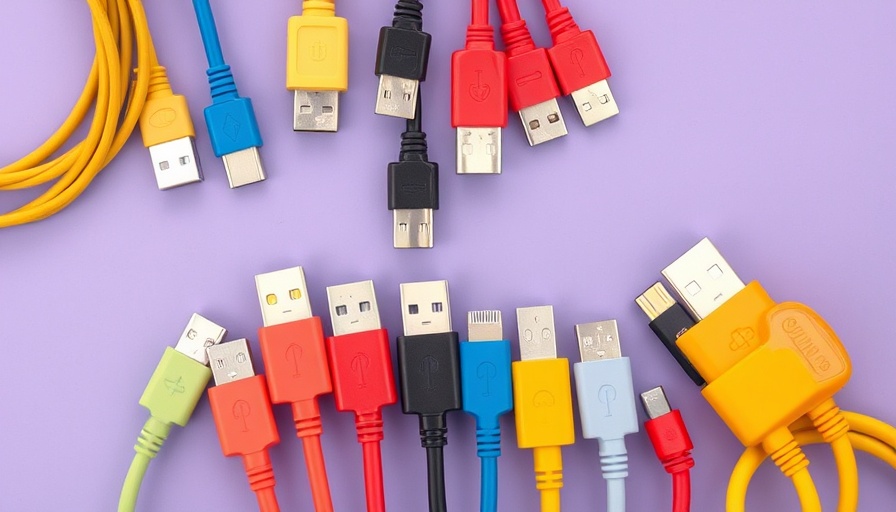
Understanding USB Cables: More Than Just a Connection
With a myriad of USB cables stashed in our drawers, it’s easy to feel overwhelmed when trying to understand the differences between them. In our tech-driven lives, choosing the correct USB cable isn’t just about compatibility; it’s about efficiency, speed, and future-proofing your devices.
Deciphering the Types: The USB Family
USB cables come in multiple types, each with unique shapes and functionalities. The most common types are USB-A, Micro-USB, USB-C, Mini-USB, and Lightning cables. As technology evolves, so do these cables, making it crucial to be aware of what each type offers.
USB-A: The Classic Choice
USB-A, the rectangular and recognizable connector, has long been the standard. Found universally across laptops, TVs, and adapters, it serves well for most basic needs. However, the struggle is real when facing the awkwardness of its non-reversible design. Various versions like USB 2.0 and USB 3.0 provide different speed capacities, reaching up to 480 Mbps for USB 2.0 and much faster for later versions.
Micro-USB: A Brief but Important Legacy
Common in older Android devices and many accessories, Micro-USB was once a go-to connector but is now becoming obsolete. Its distinctive trapezoidal shape is beginning to fade, replaced by more durable and efficient counterparts. While still useful, users should be cautious as wear can lead to performance issues.
USB-C: The Future of Connectivity
USB-C is the rising star of the USB family, offering versatility, speed, and a reversible design that users have been waiting for. This cable supports an incredible array of functionalities including charging, data transfer, and even video output. Depending on the model, USB-C can handle speeds up to 40 Gbps, making it ideal for charging everything from smartphones to laptops effectively. However, not all USB-C cables are identical, highlighting the importance of checking specifications before purchase.
Mini-USB: A Nostalgic Throwback
If you remember using Mini-USB for digital cameras and MP3 players, you’re not alone! Though it may be outdated, many old devices still rely on these connectors. If you happen to possess such devices, keep your Mini-USB cables handy, as they are becoming increasingly rare.
Lightning Cables: Apple’s Essential
For Apple enthusiasts, Lightning cables are essential. Slim and reversible, they support both charging and data transfer. However, their price and limited compatibility versus USB-C may leave many wondering about their longevity, especially with Apple shifting toward USB-C connections across newer products.
Future Considerations: Making Smart Choices
As we embrace advancements in technology, understanding USB cables can streamline our digital lives. It might be time to evaluate which cables are truly needed and consider replacing older models with USB-C to ensure compatibility with future devices. In this rapidly evolving tech landscape, opting for the right type of USB cable can optimize performance and extend the lifespan of our cherished gadgets.
Moving Forward: Be Prepared!
Next time you find yourself tangled in cords, make informed decisions about which USB cables to keep. Understanding the functionality and future potential of these connections can improve your daily tech experience.



Write A Comment